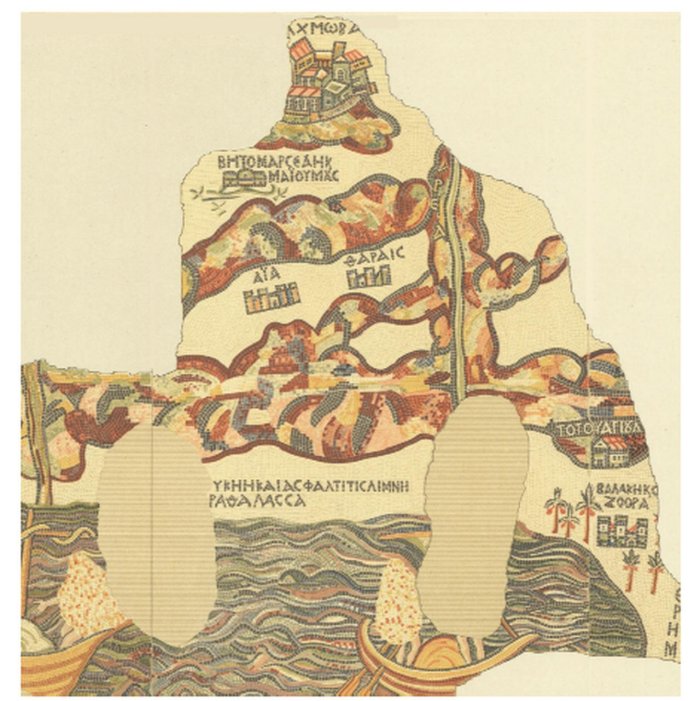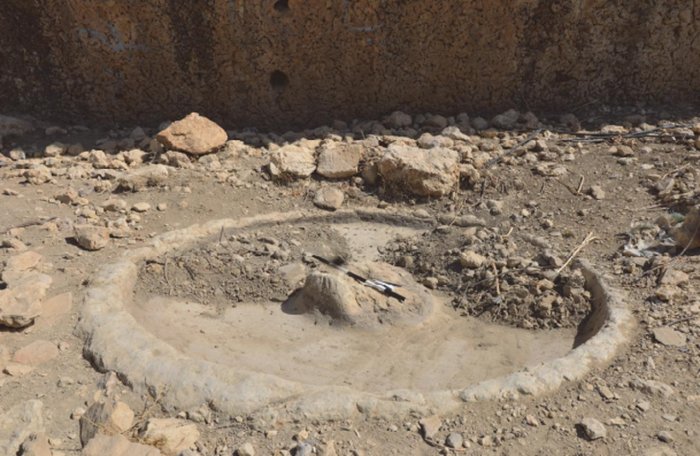Conny Waters – AncientPages.com – A city of Tharais, dating back to the Byzantine era, which had been buried for centuries and largely forgotten, has recently been rediscovered. The ruins of the city are located in the vicinity of the modern town of El-‘Iraq in the Karak Governorate, southern Jordan.

With this discovery, a new chapter may open, contributing to the region’s archaeological and cultural history.
The discovery was made possible through thorough archaeological surveys, historical analysis, and local insights conducted by a team of archaeologists led by Musallam R. al-Rawahneh, Associate Professor of Archaeology and Ancient Near Eastern Studies at the Department of Archaeology and Tourism at Mutah University.
The excavation work lasted from 2021 to 2024, and finally successfully located the city’s ruins.
This long-obscurced site is now emerging as a crucial connection to the Byzantine civilization that historically thrived throughout Jordan and its neighboring regions.
The memory of this city, known as Tharais, was long preserved thanks to the Madaba Mosaic Map and academic debates that lasted for over a century.
The Madaba Mosaic Map has long been a link to the existence of the city of Tharais. However, it was crucial to find its exact location. The map – the oldest known and existing geographic floor mosaic map of the Holy Lands in art history – was created between 542 and 570, and covers the floor of the Basilica of St. George in the city of Madaba (“the city of mosaics”) in Jordan.

A general view of the site. Image credit: Musallam R. Al-Rawahneh, Mutah University
The map shows the lands from Lebanon and Palestine to Egypt. It is considered to be the oldest preserved map of the region. Tharais appears on this map, but for many centuries, the exact location of the city remained unknown.
Do the discovered ruins belong to the forgotten Tharais? Researchers have not yet confirmed it.
During a field survey in the rugged terrain of western Karak, a breakthrough occurred in the team’s work when researchers excavated numerous artifacts, including ceramic fragments, mosaic floors, and inscriptions in both Greek and Latin languages, primarily consisting of epitaphs.

Byzantine city oif Tharais (Θαραίς), on the Madaba Mosaic Map. Credit: M. R. Al-Rawahneh, Mutah University
However, the key archaeological find turned out to be the ruins of a basilica built in the Byzantine style, which, according to archaeologists, will help to identify the long-lost city because both the layout and location are consistent with the depiction found in a 6th-century Madaba Mosaic Map.
In cooperation with researchers from Spain and France, the excavations also revealed Greek and Latin funerary inscriptions dated from the fifth to seventh centuries AD, which confirm the existence of a Christian community at the site.
Tharais’s location on ancient Roman roads connecting Zoar (modern Ghor es-Safi) to central Jordan supports its role as a trade corridor and spiritual center for the region.
“The prominence of Tharais on the Madaba Map and the discovery of a basilica church structure suggest that it served not only as an agricultural village but also as a sacred site and commercial rest stop,” says al-Rawahneh.

A cylindrical stone of the olive oil press, or for grinding grains. (Photo via M. R. Al-Rawahneh)
Additional discoveries at the site include installations such as olive oil presses, watermills, and grape crushing equipment suggests that Tharais was likely economically self-sustaining. These facilities indicate a capacity for local production and resource management. The decorative elements, such as triglyphs and mosaic tiles, can indicate a fusion of local and classical architectural styles, reflecting the region’s cultural influences and aesthetic preferences, according to the team.
Excavators have uncovered a distinct rectangular stone doorway and threshold stones, which align geometrically with entrances typically found in other Byzantine churches. As for the discovered fragments of mosaic flooring, they provide further evidence of the site’s religious use, despite many pieces still being buried beneath layers of soil, added al-Rawahneh.
The main goal for the team of Al-Rawahneh is “not just to uncover Tharais, but also to advocate for the protection of Jordan’s rich cultural heritage.
Source
Paper
Written by Conny Waters – AncientPages.com Staff Writer









